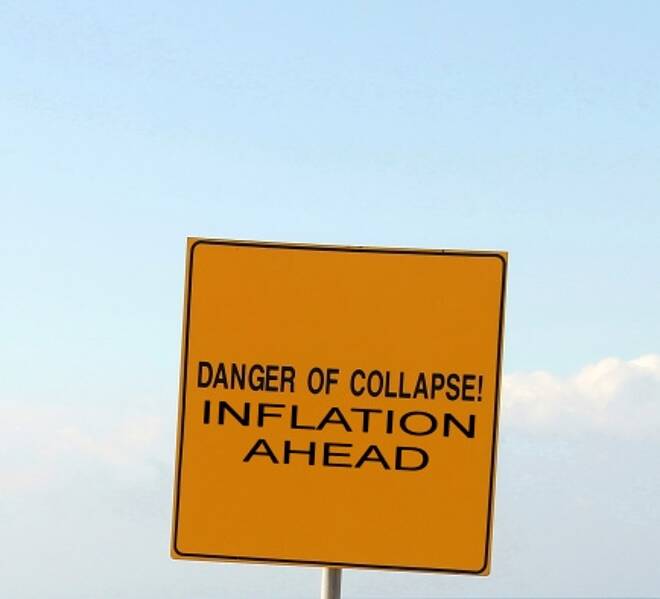Advertisement
Advertisement
Will the U.S. Escape the Rapid Inflation That Usually Follows Massive Money Printing?
Updated: Mar 6, 2019, 09:38 GMT+00:00
Is the Federal Reserve ignoring the very basic law of economics…the law of diminishing marginal utility? You remember that term from economics in high
The Fed has been printing money in hopes of stimulating growth in the U.S. economy. As the Fed printed more paper money, its balance sheet grew to over $4.0 trillion.
Below, I’ve made a table that looks at gross domestic product (GDP) growth in the U.S. each year since 2009, and where the balance sheet of our central bank stood at the end of each year.
U.S. GDP Growth vs. Growth in Size of Fed Balance Sheet
|
Year |
YOY Change |
Fed Balance Sheet (Trillions) |
YOY Change in Balance Sheet |
|
2009 |
-2.80% |
$2.08 |
73.44% |
|
2010 |
2.50% |
$2.31 |
11.21% |
|
2011 |
1.84% |
$2.74 |
18.58% |
|
2012 |
2.77% |
$2.86 |
4.36% |
|
2013 |
1.87% |
$3.47 |
21.33% |
Data source: Federal Reserve Bank of St. Louis web site,
last accessed April 1, 2014.
In the table above, you will notice something interesting; aside from 2009, there is no real correlation between the increases in the assets (paper money printed) on the Fed’s balance sheet and GDP growth. In fact, after all the money the Fed has printed, the U.S. economy grew last year at its slowest pace since 2011.
The Federal Reserve predicts the U.S. GDP in 2014 will increase between 2.8% and three percent; that’s a jump of about 50% since 2013. (Source: Federal Reserve, March 19, 2014.) I believe this to be way too optimistic. (And as we have seen in the past, these projections are usually guided lower later in the year anyway.)
Since the beginning of 2014, we have been seeing dismal economic data suggesting the U.S. economy will not be growing as much as expected this year. The law of diminishing marginal utility is starting to become very evident; the money printing is not producing the positive effects on the economy like it did before.
Examples of slow growth this year…
Personal consumption, a big part of U.S. GDP, is soft, as U.S. retailers have been posting very soft sales increases this year.
The number of new homes sold continues to decline, too. Existing-home sales are running this year at their lowest point since 2012.
But in spite of the proof of slowing GDP growth, the failed policies of easy money continue to be the policy of choice. Recently, at the 2014 National Interagency Community Reinvestment Conference in Chicago, Illinois, Janet Yellen said, “…I think this extraordinary commitment is still needed and will be for some time, and I believe that view is widely shared by my fellow policymakers at the Fed.” (Source: “What the Federal Reserve Is Doing to Promote a Stronger Job Market,” Board of Governors of the Federal Reserve System web site, March 31, 2014.)
No central bank in the history of mankind has printed as much new paper money as the Federal Reserve has over the past five years. And while economists and the Fed are not concerned with it today, my research shows that whenever this kind of money printing stopped in the past, the country printing the money subsequently encountered a very weak currency and rapid inflation. I don’t think the U.S. will escape this. In fact, I think inflation is already a big problem if we include the increase in food prices and energy prices that are excluded from the government’s official measure of inflation growth.
This article Will the U.S. Escape the Rapid Inflation That Usually Follows Massive Money Printing? Was originally posted at Profit Confidential
About the Author
Did you find this article useful?
Latest news and analysis
Advertisement
